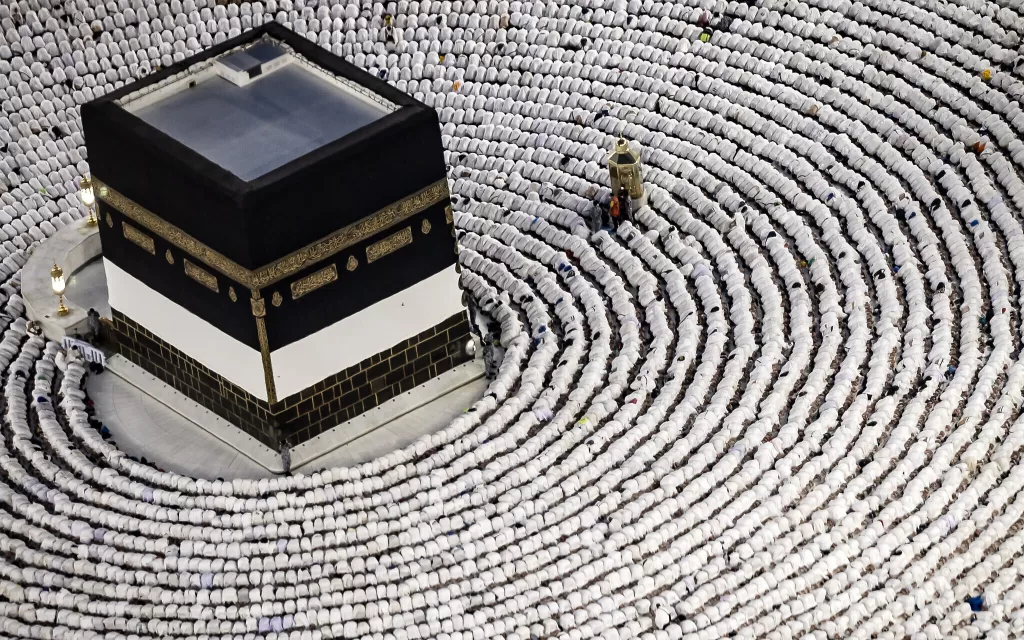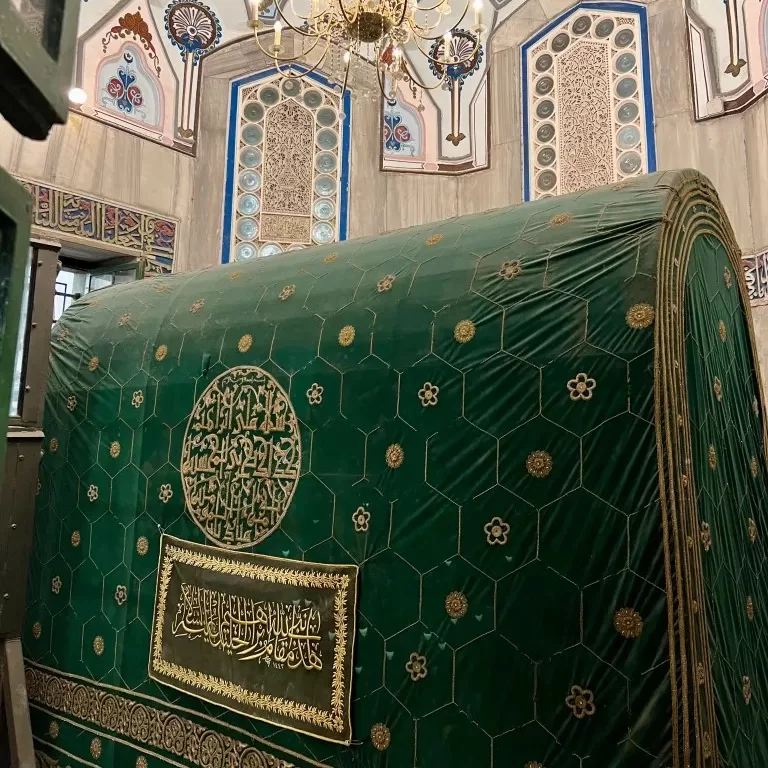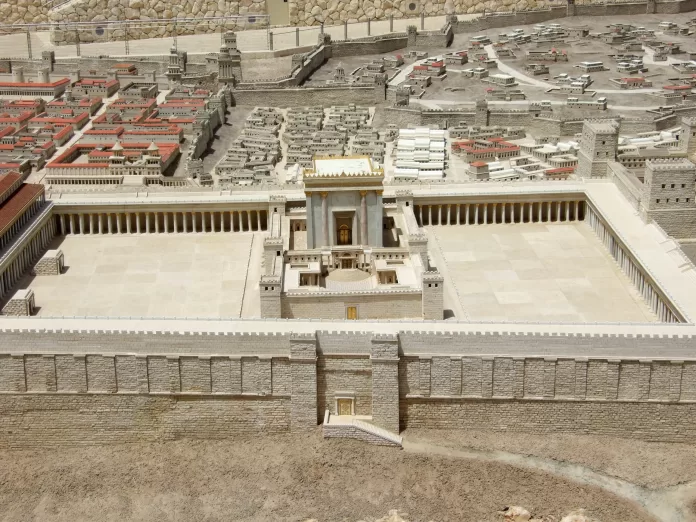From time immemorial humans all over the world have designated rocks, rivers, trees, and mountains as sacred. Pilgrimage sites and rites are shaped by stories and legends passed down through generations. People embark on journeys to a sacred place or shrine for fulfillment of their religious beliefs. It holds profound meaning for the believer as well as solidification of the communal identity. The Hebrew bible recommends pilgrimage to the temple (Beit HaMikdash) in Jerusalem. Exodus 23:14 specifies that “three times you are to hold pilgrimage for me, every year” and in Deuteronomy 16:13, “the pilgrimage festival of Sukkot, you are to observe for yourself for seven days”. The major pilgrimage to the temple on Sukkot festival was called Hag ha-Asif (Festival of Gathering).
In Judaism, pilgrimage revolved around three major festivals known as the Sheloshet Haregalim (three pilgrimage festivals): Pesach (Passover), Shavuot (Feast of Weeks), and Sukkot (Feast of Tabernacles). Passover commemorates the exodus from Egypt and the Israelites’ journey to freedom. Shavuot celebrates the giving of the Torah to Moses at Mount Sinai and Sukkot involves building temporary shelters (sukkahs) to remember the Israelites journey through the desert after the exodus.
These festivals originally required Jews to make a pilgrimage to the temple in Jerusalem called re’iyah (appearance) and offer sacrifices called Qorban in Hebrew. After the destruction of the temple and dispersion of Jews, pilgrimage was discontinued and replaced with religious observances.
During sukkot, members of the congregation join a procession that circles the inside of the sanctuary of the synagogue called hak’kafah (circling).

The shrine of Ka’aba in Mecca is linked with early Islamic traditions and Prophet Muhammad’s (PBUH) family was the custodian of the shrine in pre-Islamic era. In the first few years of Islam, Muslims prayed towards the ruins of the destroyed Jewish temple in Jerusalem, but Ka’aba’s place was affirmed in daily Muslim life when direction of prayer was changed from Jerusalem to Ka’aba. The Muslim pilgrimage to Mecca called Hajj is one of the main pillars of Islam and every able-bodied person is mandated to perform Hajj on specific days once in his/her lifetime if he or she can afford to do so. The minor pilgrimage called umra’h can be performed any time of the year. In Quran verses about pilgrimage include al Hajj 22:27 & 29, “call ‘all’ people to the pilgrimage” and “circle the ancient house” and in al Baqarah 2:196, “complete the pilgrimage (Hajj) and minor pilgrimage (umra’h) for Allah”.
The Islamic pilgrimage to Mecca consists of wearing simple two pieces of white cloth (ihram), the sevenfold circumambulation of the Ka’aba (tawaf), running between the hills of Safa and Marwa (sa’i), going to the plains of Mount Arafat, spending a night on the plains of Muzdalifa, staying in a tent in Mina, symbolic stoning of the devil, sacrificing an animal and celebrating the three – day festival of Eid ul Adha. In pre-Islamic Arabia, Mecca was one of the center of pagan pilgrimage and sacrifice rites. The Hajj rituals performed by Muslims outside of Mecca, in Arafat, Muzdalifa and Mina with animal sacrifice are like ‘ritualized hunt-like competitions reported to have been a part the pre-Islamic pilgrimage gathering at the Dhū al-Majāz fair’. Tribal competitions, ritualized hunts, and the sacrifice of animals at mountaintop were part of this festival.
Islam continued the tradition but linked it with monotheism by incorporating ancient prophets, especially Ibrahim. Several verses of the Quran link Ibrahim with the shrine of Ka’aba.
In Quran al Baqarah 2:127, “Abraham raised the foundation of the House with Ishmael” and in Quran al Hajj 22:26-27,
“we assigned to Abraham the site of the House, ‘saying,’ “do not associate anything with Me ‘in worship’ and purify My House for those who circle ‘the Ka’aba” and “call ‘all’ people to the pilgrimage”.

In addition to their main pilgrimages, Jews and Muslims visit shrines of Prophets, sages, and holy men to get some form of divine blessing. Puritans of both religions do not approve of such visits and view it as encroachment on strict monotheism so stressed in Judaism and Islam. It is hard even for monotheism to completely eradicate these venerations where saints replace the pagan deities. In some areas, both communities claim exclusive rights to the venerated shrine resulting in violent conflict. In Hebron, the burial place of the patriarch of both religions Ibrahim is one such place.
Muslims call it sanctuary of Ibrahim (al haram al Ibrahimi) and Jews call it cave of the patriarchs (me’arat Ha’machpelah) and space is divided into a mosque and a synagogue. Jewish and Muslim pilgrimages are like traditions in other religions including pagan traditions. Prophets common among both religions are the link with some similarities in rituals although pilgrimage traditions and rituals diverged as each religion had a different historical trajectory.
Notes
• Pamela Berger. Jewish-Muslim Veneration at Pilgrimage Places in the Holy Land. Religion and the Arts 15 (2011), 1-60. https://www.themathesontrust.org/papers/judaism/ Berger-Jewish-Muslim_Veneration.pdf
• Peter Webb. The Hajj before Muhammad: Journeys to Mecca in Muslim Narratives of Pre-Islamic History https://www.academia. edu/7027500/The_Hajj_before_Muhammad
• Peter Webb. The History and Significance of the Meccan Hajj – from Pre-Islam to the Rise of the Abbasids https://www.academia.edu/109034309/The_History_and_Significance_of_the_Meccan_Hajj_from_Pre_Islam_to_the_Rise_of_the_Abbasids
• Rabbi Allan Maller. Can the Hajj spirit bring Jews and Muslims Closer together? June 27, 2022
https://www.eurasiareview. com/27062022-can-thehajj-spirit-bring-jews-andmuslims-closer-togetheroped/#google_vignette
• The Noble Quran. An easy-to-use site with Arabic text and English translation. Translations used in this article are from this site. https://quran.com/en





